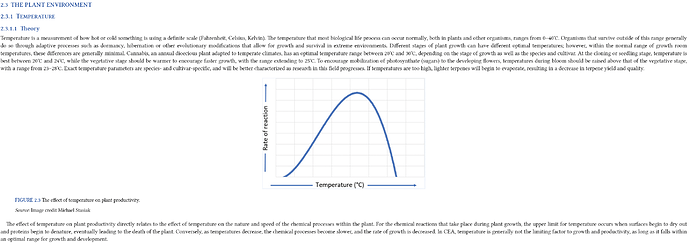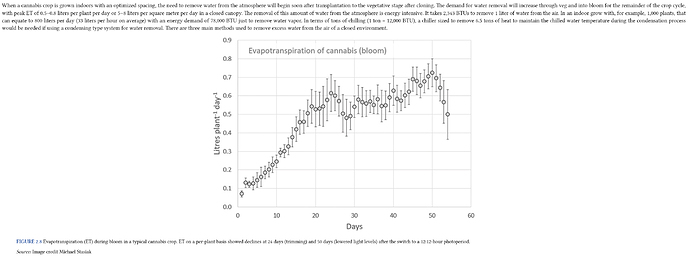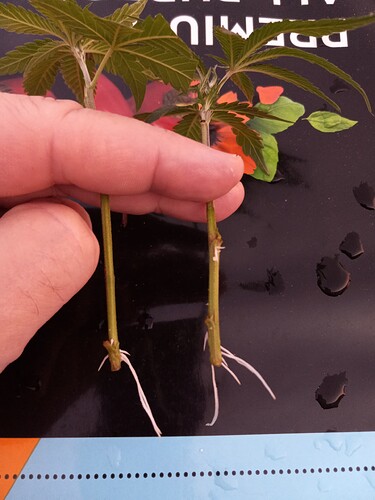I just read a newly released academic journal sourced and written book from CRC Press titled, Handbook of Cannabis Production in Controlled Environments. The ebook cost me ~$58; the paperback and hardcover won’t be released for another month.
Each chapters’ authors have solid academic backgrounds, including Dr. Michael Stasiak, P.h.D (Manager and Technical Operations and Senior Research Associate at UofG’s Controlled Environment Systems Research Facility), Dr. Deron Caplan (PhD in Cannabis Horticulture from UofG), Dr. Ernest Small, P.h.D (Principal Research Scientist at the Eastern Cereal and Oilseed Research Centre), and University of Guelph, School of Environmental Sciences Profs. Youbin Zheng (P.h.D. in Plant physiology and Biochemistry) and Mike Dixon P.h.D. (Director of the Controlled Environment Systems Research Facility).
It’s a decent book, and while there’s nothing groundbreaking or new to me, it includes some helpful information, yet, I disagree with some claims in the book. For example, the claim that leaf temp is generally less than air temp (without noting caveats regarding air velocity and PPFD) and the recommendation to clip leaf tips when cloning. Clipping leaf tips is almost always a bad practice. It will increase cloning duration while reducing photosynthetic rate, leaf tissue nutrient concentrations, root growth, and cloning success rate. Don’t be a dip; just don’t clip! (j/k ![]() ) Clipping leaf tips is only helpful when over-packing a cloning tray to prevent fungal diseases from constantly wet leaves.
) Clipping leaf tips is only helpful when over-packing a cloning tray to prevent fungal diseases from constantly wet leaves.
While the book is an excellent addition to any cannabis library, I think it would be more helpful to people who, unlike me, do something else with their lives than read published research studies.
Out of 5 thumbs up, I give it ![]()
![]()
![]()
![]()




